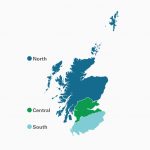Openreach Says UK Broadband Usage Increased by 9% in 2023

Network access provider Openreach has revealed that broadband usage across their UK network of ISPs increased by around 9% during 2023 (up vs 2.5% in 2022) to total 94,722 PetaBytes (PB) of data. The results for 2023 also include data from both their “full fibre” and “superfast” networks, seemingly for the first time.
The network access provider typically supplies numerous broadband ISPs (e.g. TalkTalk, BT, Sky Broadband and hundreds more) across the country and as such their platform often sees the impact of major events, such as big software updates, online video game releases or live video streaming.
Openreach’s latest data states that there was a real surge in broadband use towards the end of the year, with December being the busiest month of 2023 for broadband traffic (8,944 PB), followed by November (8,289 PB), and October (8,251 PB).
Advertisement
The busiest day across the network was Tuesday 26th December 2023 (Boxing Day), when 342 PB of data was consumed. This was largely driven by the ongoing festivities, people using their broadband connections to stay in touch, set up new devices, watch movies, and the streaming of six Amazon Prime football matches. By comparison, Christmas Eve and Christmas Day see much lower usage, as aptly demonstrated by BT’s latest data (here).
The 2nd busiest day of the year was Wednesday 27th December 2023 (330PB), which continued the trend of the previous day with live football and ongoing celebrations across the UK. The busiest hour during the festive period was between 9pm and 10pm on Thursday 28th December, when 27.1PB was used.

The operator also reported that the busiest day of the week is typically a Sunday, while the busiest time on the network is usually between 8pm and 9pm, but this can be extended from 7pm through to 10pm. The busiest hour for broadband consumption during 2023, and indeed ever, was between 8pm and 9pm on Wednesday 6th November 2023, when Amazon Prime screened six Premier League matches – 29.5 PB of data was used by the UK, the average for that hour would normally be around 21 PB.
Advertisement
Trevor Linney, OR’s Director of Network Technology, said:
“Our network has once again performed the important role of keeping the UK connected throughout 2023, both at home and at work. We’re seeing a real pattern starting to emerge in these annual reports, with live sports and gaming at the heart of huge jumps in data usage.
We believe that our insights are some of the best and most comprehensive available. The Openreach network is the biggest in the UK, and we carry broadband traffic for hundreds of broadband companies. This gives us the full picture.
As always, the real good news is that our network always stands up to the test. We have a team of experts working hard to make sure there’s enough capacity for every eventuality. They’re there day and night, throughout the year, constantly looking out for what the next big broadband traffic day could be.”
As we always say, demand for data is constantly rising and broadband / mobile connections are forever getting faster, thus new peaks of usage are being set all the time by every ISP. Ofcom’s own data recently revealed that the average monthly data volume per household on fixed broadband connections has increased over the past year to 535 GigaBytes (up by 11% vs 482GB last year).
Mark is a professional technology writer, IT consultant and computer engineer from Dorset (England), he also founded ISPreview in 1999 and enjoys analysing the latest telecoms and broadband developments. Find me on X (Twitter), Mastodon, Facebook, BlueSky, Threads.net and Linkedin.























































Do these numbers compensate for customers leaving the Openreach network for Altnets?
Looks like raw figures.
Fits with 9% traffic increase across network when average user is using 11% more data.
What compensation is needed? It’s ab absolute number of petabytes teansferred. The number of customers joining or leaving the network is not relevant.
“the average monthly data volume per household on fixed broadband connections has increased over the past year to 535 GigaBytes”
I wish they’d give a median figure. The mean can easily be skewed by a small proportion of ultra-heavy users.
“ The Openreach network is the biggest in the UK” – that’s not actually true though is it Trevor?
Unless something has changed Openreach don’t have a network they have a large number of access networks that are separate and that ISPs must buy a connection to each one of to serve customers on that network. Each L2S is separate in Openreach’s “network” for ISPs so by real definitions it is not a single network.
Wholesalers and ISPs have to build their own network from Openreach’s many access networks, Openreach don’t provide a single network. Would be more accurate for Openreach to say they have the largest number of end users perhaps?
Anon, of course its the biggest network in the UK..
Do you work for them??
I work on the main core of the network and they are definitely the largest by far
Why do you think all isps use there exchanges, even virgin goes through our network
@Tylor – did you read what I put it is NOT one network, biggest overall yes but one network no. If you can sell an ISP a single cablelink that can access any customer in the UK then yes call it a network.
It is simply a large number of separate layer 2 switches with OLTs connected to each one, a single network that does not make. If there was a backbone connecting all those switches together then it would be a network, but that is left to wholesalers and ISPs to do.
Anon, please get a life.